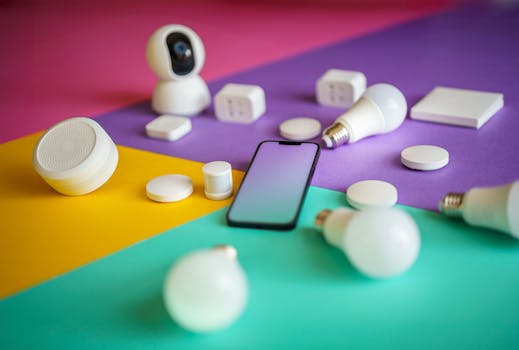
Smart Connectivity: The Role of IoT in Modern Communication. The Internet of Things (IoT) is revolutionizing modern communication by enabling smart connectivity across various devices and platforms. IoT has transformed the way we interact with each other and with devices, making communication faster, more efficient, and more convenient. In this article, we will explore the role of IoT in modern communication and its impact on various aspects of our lives.
The concept of IoT refers to the network of physical devices, vehicles, home appliances, and other items that are embedded with sensors, software, and connectivity, allowing them to collect and exchange data. This enables these devices to interact with each other and with humans, creating a smart and connected environment. IoT has numerous applications in various fields, including healthcare, transportation, home automation, and industrial automation.
In the context of modern communication, IoT plays a vital role in enabling smart connectivity. With the help of IoT, devices can communicate with each other and with humans in real-time, facilitating seamless exchange of information. For instance, smart home devices can be controlled remotely using a smartphone app, and wearable devices can track our health and fitness metrics, sending notifications to our smartphones. IoT has also enabled the development of smart cities, where various urban infrastructure and services are connected and managed through a centralized platform.
One of the significant advantages of IoT in modern communication is its ability to provide real-time data and insights. With the help of sensors and analytics, IoT devices can collect and analyze data, providing valuable insights that can inform decision-making. For example, in the context of transportation, IoT sensors can monitor traffic conditions, providing real-time updates and optimizing traffic flow. Similarly, in the context of healthcare, IoT devices can monitor patient vital signs, providing real-time alerts and enabling early intervention.
Another significant benefit of IoT in modern communication is its ability to enhance customer experience. With the help of IoT, businesses can provide personalized and interactive experiences to their customers. For instance, retail stores can use IoT sensors to track customer behavior, providing personalized recommendations and offers. Similarly, hotels can use IoT devices to provide personalized services, such as adjusting room temperature and lighting to individual preferences.
In addition to these benefits, IoT also has the potential to transform the way we communicate with each other. With the help of IoT, we can connect with each other in new and innovative ways. For example, virtual and augmented reality technologies can enable immersive and interactive communication experiences. Similarly, social robots can provide companionship and social interaction, particularly for the elderly and those with disabilities.
However, the increasing dependence on IoT devices also raises concerns about security and privacy. As IoT devices collect and transmit sensitive data, there is a risk of data breaches and cyber attacks. Therefore, it is essential to implement robust security measures, such as encryption and secure authentication, to protect IoT devices and data.
Furthermore, the integration of IoT with other technologies, such as artificial intelligence (AI) and blockchain, can further enhance its potential in modern communication. For instance, AI can be used to analyze IoT data, providing insights and predicting patterns. Similarly, blockchain can be used to secure IoT data, providing a decentralized and tamper-proof platform for data exchange.
In conclusion, Smart Connectivity: The Role of IoT in Modern Communication is a rapidly evolving field that has the potential to transform the way we communicate with each other and with devices. As IoT continues to advance and mature, we can expect to see new and innovative applications in various fields, including healthcare, transportation, and home automation. However, it is essential to address the concerns about security and privacy, ensuring that IoT devices and data are protected and secure.
The future of IoT in modern communication is exciting and promising. As we move towards a more connected and smart world, IoT will play a vital role in enabling seamless communication and interaction between devices and humans. With its ability to provide real-time data and insights, enhance customer experience, and transform the way we communicate with each other, IoT is poised to revolutionize modern communication, making it faster, more efficient, and more convenient.




